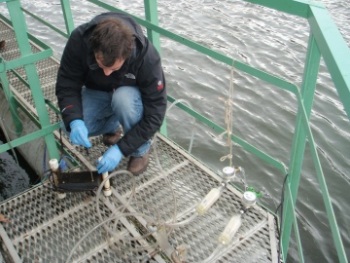Research
 |
 |
Natural Gas Drilling
As part of our core mission to provide safe, high quality drinking water to our nearly two million customers in the Philadelphia region, the source water protection program is closely following discussions surrounding natural gas drilling in our region. For more information, view our Marcellus Shale page.
Iodine-131
Trace amounts of iodine-131 are present in waterways around the world as well as in our rivers. Although the drinking water levels in Philadelphia pose no risk to public health, PWD continually monitors and investigates challenges to water quality in our region. For more information, view our Iodine-131 page.
Schuylkill River Water Quantity Analysis
The Schuylkill River Water Quantity Analysis is a continuation of the Source Water Assessment and Protection Planning processes. The analysis focuses on the factors that influence water availability in the Schuylkill River. This analysis will identify how, where, and in what amounts water is used throughout the watershed. The study also identifies periods of low flow when the percentage of flow comprised of Wastewater Treatment Plant discharge is over 50%. Due to the downstream location of Philadelphia, it is critical that PWD understands the amount of water available from upstream in relationship to the amount of water needed for Philadelphia drinking water, industries, and other uses.
Cryptosporidium Source Tracking Projects
In collaboration with Lehigh University, PWD participates in source tracking projects to identify the primary sources and vectors of Cryptosporidium in the Wissahickon watershed and at the Queen Lane intake. Recent source tracking studies have improved PWD’s understanding of not only the sources, but also the vectors, of Crytosporidium contamination throughout the watershed. Findings from these studies also support the conclusion made in the SWA and SWPP, that WWTP effluent and animal hosts are the primary sources of Cryptosporidium at the Queen Lane intake.
Climate Change Research
The Delaware River Source Water Assessment identifies climate change as one of the issues of greatest concern for Philadelphia’s water supply on the Delaware. PWD is considering several types of approaches to address climate change, including research, adaptation and mitigation. In collaboration with the Partnership for the Delaware Estuary (PDE) and the Environmental Protection Agency (EPA), PWD completed an assessment of the climate drivers, changing physical conditions, and the subsequent vulnerabilities that Philadelphia will face due to climate change. Based on these vulnerabilities, PWD is looking at adaptation options for Philadelphia’s drinking water supply and identifying priority research needs for the future.
Sea Level Rise Research
The Delaware River Source Water Assessment also identifies sea level rise as a priority concern for Philadelphia’s water supply on the Delaware. Philadelphia’s Baxter intake, which provides drinking water to nearly 1 million people, is located in the tidally-influenced fresh waters of the Delaware River. PWD is currently in the process of assessing what options exist to ensure that the salty water of the tidal Delaware does not reach the Baxter intake as climate conditions change. As part of this assessment, PWD is developing modeling capabilities to not only evaluate possible sea level rise and salt intrusion scenarios, but to examine issues related to nutrient fate and transport and spill event warning as well.